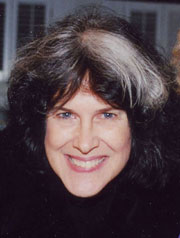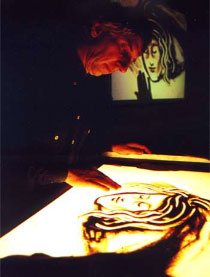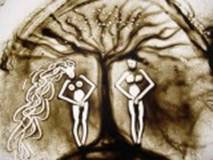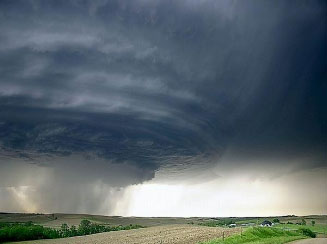 |
→ April 2005 Contents → Ebits
|
E-Bits
|
 |
|
There is a lot of chatter going on these days about basic things once taken for granted. Now, seemingly, much is up for re-evaluation in a surprising 21st-century philosophical and spiritual tug-of-war. We’ve entered an age of thought and information in which even the concept of life — what it is, when it begins, when it ends, and how it got to be that way — is under question. Along with this debate, there is a lot of talk about evolution and devolution, creation and destruction, dumbing-down and wising-up. Increasingly, we realize the power of nature even as we depend to a greater degree on science. Perhaps inevitably, concepts upon which both are based are coming more and more under attack.
All of us, whether we possess a high regard for science or not, are inspired by metaphor in art, music and literature. We rely upon them for beauty and instruction where facts and figures can neither penetrate nor abide. To our great benefit, artists respond to the eternal struggle for these truths by giving us synthesis and harmony, however temporary, and articulating that which is inexplicable yet lives in the collective mind encompassing every culture on earth. It is especially true that photography provides a venue for art and science to work together, in a way not possible before its emergence in the early part of the 19th century. It is the nature of the photographic medium, as Cartier-Bresson so aptly put it, to capture a moment — in his case, “the decisive moment.”
Last month in E-Bits we pondered the temporal nature of things, of moments once here and now gone. This month, we continue that theme with two items, one video and the other still photography, that capture things both beautiful and temporary. The first records the creation and evolution of a piece of art in sand, only briefly in existence, which, without a photographic record, could only exist in the mind. This piece is not unlike the image of a monk’s mandala of colored grains of sand, tediously and meticulously created only to be destroyed once perfected, or the brief tenure of the Christos’ saffron “Gates” in Central Park, painstakingly constructed, viewed by those lucky enough to see them, and then dismantled after only two weeks. Both pay tribute to the Buddhist concept of the ever-changing and temporary nature of reality.
The video clip below is a live performance of sand animation by artist Ferenc Cakó at The Seoul International Cartoon and Animation Festival. Here we present Cakó, honored in his native country as Outstanding Artist of the Hungarian People’s Republic, performing his amazingly beautiful and imaginatively metaphorical interpretation of a timeless story set to modern heroic music entitled “Genesis,” which he created before a live audience at SICAF in 2003.
More about Ferenc Cakó and his ephemeral works of art can be found at the artist’s Web site and at sandanimation.com.
Nature never ceases to amaze, and it is not often we can actually see the formations of clouds and condensation patterns from the ground during climatic events. In a gallery of photographs allegedly from Oklahoma, land of intense weather, the opportunity to see powerful storms forming engages the imagination in a unique way. Unfortunately, we do not know the name of the photographer or photographers who captured these awesome moments. View these beautiful shots of nature in process, and ponder the events that must have followed.
In the current film, “Travellers and Magicians,” one of the travellers says a peach blossom is only beautiful because it’s temporary. Perhaps we have photography to thank for making us aware of many temporary moments, beautiful or terrible, that we would not otherwise experience personally, and for helping us travel in our minds to the past, present, and even the future, to resolve the philosophical and spiritual tugs-of-war of the 21st century.
© Beverly Spicer
The links that appear in this column are from the World Wide Web. Credit is given where the creator is known. The Digital Journalist and the author claim no copyright ownership of any video or photographic materials that appear herein. |
|
Back to April 2005 Contents
|
|




